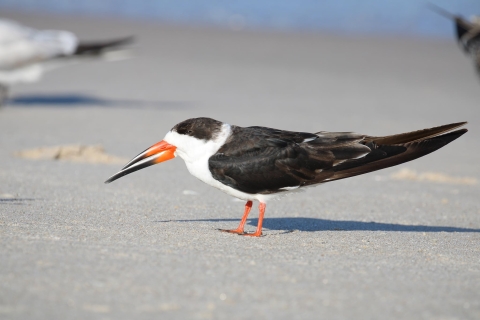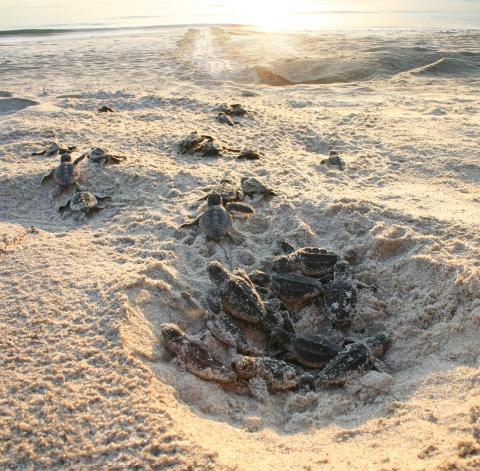Seasons of Wildlife
Winter
While winter may mean cold, wind, and snow elsewhere, at the Archie Carr National Wildlife Refuge, the average low temperature in winter is 52 degrees. This is the perfect temperature for exploring Florida without the risk of heat-related illness. Bonus: there are fewer insects to bother you. Winter also means the return of some species of shorebirds. Gulls, terns, plovers, and sandpipers will be in larger numbers throughout the winter. There is rarely turtle activity in the winter, although in 2020, we recorded the latest nest for the state of Florida, on December 6!
Spring
Spring has sprung! Spring means migration. We will be seeing different species of birds as they begin their spring migrations. Wildflowers will be blooming, and temperatures will be rising. The average high temperature in the spring is 82 degrees. Sea turtles begin to arrive to nest on our beaches in the spring, typically in March and April. As the temperatures warm up, be on the lookout for reptiles like the Eastern coachwhip snake, which may be active near the dunes.
Summer
In the summer, Florida’s weather is unpredictable. Be prepared for temperatures into the 90’s or an afternoon thunderstorm. Plan your trip with hurricane season in mind (June-November). Summer is the busy season for sea turtles. Within our 20.5 miles of beach, loggerheads annually produce between 8,000 to 20,000 nests (averaging 400-1,000 nests per mile/1.6 km). Green sea turtles at the refuge annually produce 1,000 to 15,000 nests. May through August are the peak months for sea turtle nesting activity. Turtle walks and digs are available through the Barrier Island Sanctuary.
Fall
Sea turtle nesting activity decreases in the fall, but the hatchlings are just getting started. As it takes approximately 60 days for a nest to incubate, nests laid in August may hatch in October. There are fewer mothers coming ashore to nest, but our sea turtle researchers are still busy! Fall also means the peak of hurricane season. Each year hurricane season begins on June 1st and lasts 5 months, with storms typically peaking in August and September.

